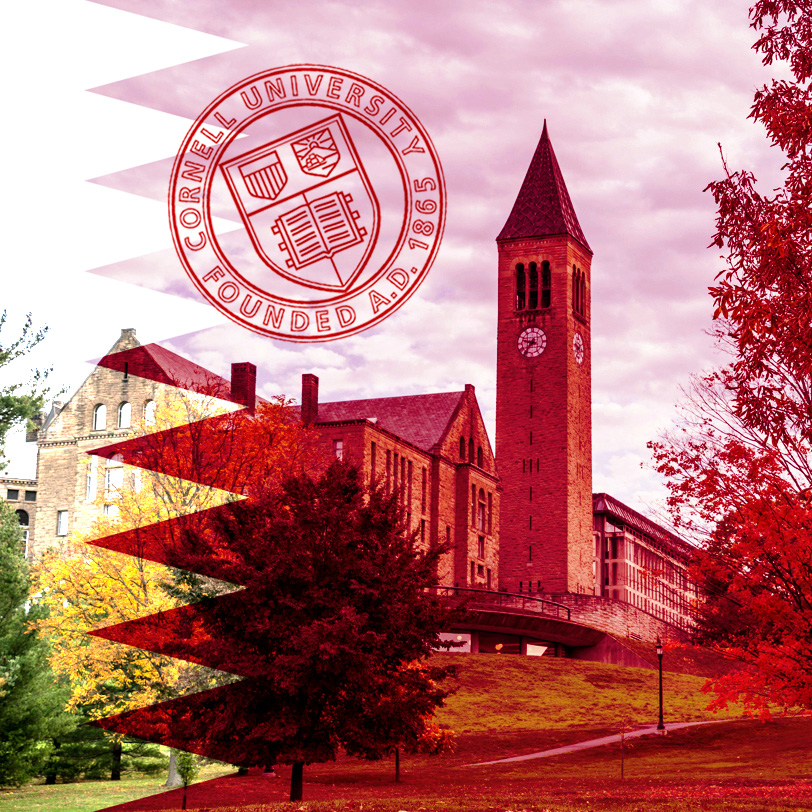Billionaires from the right and left of the political spectrum have involved themselves in the recent university protests. Ken Griffin, Ronald Lauder, and Bill Ackman have all halted donations to Ivy League universities in protest at the rise of anti-Semitism on their campuses, while social-change groups involved in staging the protests have had their funding traced back—albeit through several degrees of separation and without their specific knowledge—to the Bill & Melinda Gates Foundation, George Soros’s Open Society Foundations, and the Rockefeller Brothers Fund. Yet the money flowing from, or being withheld by, these donors is dwarfed by the billions of dollars that authoritarian foreign governments are donating to the universities in order to quietly influence curriculum, hiring, and admissions policies.
According to the Institute for the Study of Global Antisemitism and Policy (ISGAP), the largest donations are coming from Qatar and its NGO proxies. “Qatar has less than 350,000 citizens [its total population, which is some 2.5 million, is largely made up of migrant workers], and they are giving more money to American universities than any country in the world,” says Charles Asher Small, the founder and executive director of ISGAP, who on May 8 gave a closed-door briefing to the Congressional Committee on Oversight and Accountability about the rise of anti-Semitism on college campuses.
To give some examples of the scale of the donations, Cornell University received more than $1.95 billion in direct donations from Qatar between 2001 and 2023, making Qatar its largest direct foreign donor—30 times higher than the next largest, Hong Kong—according to ISGAP. Georgetown University has received $760 million from Qatar and its NGO proxies between 2001 and 2021, while just last week at a House hearing on anti-Semitism, Northwestern University was revealed to have received more than $600 million from Qatar between 2007 and 2022. In fact, between 2014 and 2019, Qatar gave $2.7 billion to American colleges and universities, far more than China’s $1.1 billion and Saudi Arabia’s $1.06 billion.
This is of concern because as Qatar funds some of America’s elite universities, as well as individual scholars and study programs, the tiny authoritarian regime is also one of the major financial backers of Hamas in Gaza and provides shelter to the Hamas leadership in its capital of Doha. According to Human Rights Watch, Qatar denies its huge foreign-labor force basic human rights and discriminates against women and lesbian, gay, bisexual, and transgender people. And the petro-state has also been accused of corruption on a massive scale, from bribing FIFA officials to host the 2022 World Cup to “Qatargate,” the ongoing scandal in the European Parliament that alleges Qatar bribed politicians to influence votes.
Universities that receive federal funding—the vast majority—are required to report gifts and donations worth more than $250,000 from foreign governments. But those universities don’t need to report gifts and donations from state proxies or research grants paid by NGOs funded by foreign governments, and their presses are not required to report “partnerships” with foreign governments.
So what do foreign governments get in exchange for their money? “Money buys influence,” says James H. Finkelstein, professor emeritus of public policy at George Mason University’s Schar School of Policy and Government. “Influence over things like the curriculum and endowing chairs, to influence over who is hired.” In the case of Qatar, Finkelstein says that the creation of an institute for Middle East studies is often how this influence-buying begins. “Universities will go to great lengths to find ways to accept donations. Philanthropy has become an increasingly important part of university operating budgets.”
Between 2014 and 2019, Qatar gave $2.7 billion to American colleges and universities, far more than China’s $1.1 billion and Saudi Arabia’s $1.06 billion.
Jonathan Schanzer, senior vice president for research at the Foundation for Defense of Democracies, a hawkish think tank in Washington, D.C., believes Qatar is replacing traditional alumni associations. “When you are getting billions from governments, the $20,000, $50,000, $100,000 donors that used to form the backbone of our education system all of a sudden become unnecessary.... There has been a deprioritization of the traditional donor philanthropic network that has kept universities running for years.” Schanzer says that the foreign money started seeping into universities during the Arab Spring, in the early 2010s.
(It should be noted that while ISGAP is privately funded, it has received a grant from the Israeli government. The Foundation for Defense of Democracies has been indirectly linked by the Associated Press and The Intercept to Qatar’s regional rival the United Arab Emirates although the FDD states that it “proudly accepts no funding from any foreign government.”)
Qatar’s influence on American universities also stretches to their campuses abroad. The Qatar Foundation for Education, Science and Community Development was set up to fund programs in Qatar’s Education City, a development in Ar Rayyān, just west of Doha, made up of outposts of elite Western universities including Georgetown University, Texas A&M, Northwestern University, and Weill Cornell Medicine.

In late December, however, ISGAP sent a letter to U.S. officials alleging that Qatar had “substantial ownership” of weapons-development rights and nuclear-engineering research that was developed at Texas A&M. Texas A&M stated that no nuclear-technology, nuclear-weapons, defense, or national-security research was conducted on its campus, nor was the Qatar campus connected to nuclear-reactor research in Texas or at the Los Alamos National Laboratory. However, a little over a month later, Texas A&M’s board of regents voted seven to one to end its contract with the foundation and close their Education City campus by 2028.
The shutdown was publicly attributed to “regional instability.” The board “decided that the core mission of Texas A&M should be advanced primarily within Texas and the United States,” the board-of-regents chair, Bill Mahomes, said in a statement. The Qatar Foundation said the decision was “disappointing” and based on “disinformation.”

Similarly, in the wake of last week’s House hearing on anti-Semitism, which linked Northwestern University to $600 million in Qatari donations—the university said the money was used solely to cover operating costs at the university’s Doha campus—Francisco Marmolejo, president of higher education at the Qatar Foundation, stated that “Qatar Foundation is not in the business of buying, or attempting to buy, influence in U.S. higher education institutions.”
Such complications are not unfamiliar to American universities operating in the Middle East. In 2005, George Mason University opened its own campus in the United Arab Emirates. “Two of the [American] directors were forced out over a short period of time because of intolerance,” says Finkelstein. “One guy was amazing, but a scholarly article that he had written on the use of public parks and their relationship to the gay community in the Northeast came to light after he had been appointed, and [George Mason University] was told he had to leave. It was real research, not an advocacy piece, but the people in the U.A.E. said it was unacceptable.”

Another time, Finkelstein says, U.A.E. officials told George Mason University that they could send only one Black female academic to the U.A.E., not two. “American values and practices are very different from what happens in their societies, and the [foreign governments] also have a say in curriculum and appointments, which would not happen in the U.S. The [foreign] governments were funding the [American] institutions, and their feeling was, Our money, our rules.” The worry for some, especially on the political right, is that these rules are being applied in the U.S.A. as well as abroad.
Qatar and the U.A.E. are not alone in trying to influence U.S. universities. In 2004, Confucius Institutes began to appear on American campuses under the auspices of the Chinese International Education Foundation, which was affiliated with the Chinese Ministry of Education. At their height, there were as many as 111 Confucius Institutes on U.S. university campuses, including Columbia University, Stanford, and George Washington University, although their numbers dropped precipitously following the U.S. State Department’s 2020 announcement that they were part of China’s “global influence and propaganda apparatus.” However, China experts say many of the institutes re-emerged with new names after being disbanded.
“There has been a deprioritization of the traditional donor philanthropic network that has kept universities running for years.”
Similarly, Russia recruited M.I.T. to join their Skolkovo Foundation in 2011. Founded by Russian president Dmitry Medvedev in 2010, it was part of a Russian-government effort to create a science-and-technology hub akin to Silicon Valley. Yet the special agent in charge at the F.B.I.’s Boston office, Lucia Ziobro, was so concerned about the foundation’s threat to national security that in 2014—two months after the Russian takeover of Crimea—she wrote an op-ed in the Boston Business Journal in which she warned Boston-area universities and businesses that Russia was trying to partner with them as part of its espionage program to access “dual-use technologies with military and commercial applications.” Despite this warning, it was not until February 2022, and the invasion of Ukraine, that M.I.T. finally quit the foundation.
Anders Åslund, a Swedish economist and diplomat—and current adjunct professor at Georgetown University—notes that foreign-government influence at elite universities cuts both ways. “Skolkovo was a corrupt undertaking on the Russian side,” Åslund says. However, he added that although M.I.T. cut its partnership with Skolkovo, ultimately it was Russia who “pulled back and cut ties” with other academic partnerships, including with Bard College and Columbia University. “The Russians cut off everything,” says Åslund. “They are afraid of American influence.”
In general, Finkelstein says, foreign influence isn’t too different from U.S. corporate influence in the 1950s and 1960s, “when tobacco companies funded research at universities trying to show there were benefits to smoking, and then there was no research to show smoking is bad for you. Universities have a long history of this. We are educating the future generations who are going to be decision-makers, and it’s a place where people have found they can be more vulnerable to influence.”
But Charles Asher Small draws an even darker analogy, “I always tell my students that in Nazi Germany, the only institution that voluntarily gave up its Jews wasn’t the unions or the military or the police. It was the universities.”
Jennifer Gould is a columnist at the New York Post whose coverage includes real estate, money laundering, and global corruption


